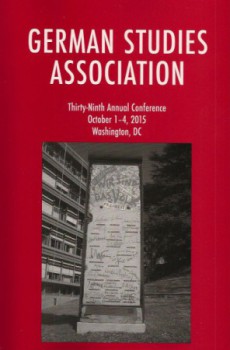Presented at the 2015 annual conference of the German Studies Association in Washington, DC as part of the “Occupy, Blockade, Riot: Seizing Space in the 1970s and 1980s” panel.

Abstract: In the course of the 1970s, the occupation of houses, factories, churches, and construction sites became a common denominator of diverse protests across Western Europe addressing a range of issues. Taking over and taking up space thus became essential strategies of the anti-nuclear movement during the 1970s, from the well-known protests in Wyhl (1975) and Gorleben (1980) to less successful ones in Brokdorf and Grohnde (1976-77). The protagonists of these protests saw their actions as complementary to urban squatting in Berlin, Freiburg, and Hamburg, and many of them even moved back and forth between city neighborhoods and occupied nuclear sites.
However, anti-nuclear site occupations differed crucially from urban squatting by virtue of the rural spaces in which they took place. Focusing on contemporary imaginings of the rural world, interactions between locals and outsiders at site occupations, and the difficult relationship of urban activists to rural protest spaces, this paper argues that anti-nuclear protest was both enhanced and complicated by the changing urban-rural dynamics of the 1970s. On the one hand, the appeal of anti-nuclear protest was greatly amplified by the Romantic and revolutionary imaginings that leftwing, urban activists projected onto the countryside in this decade of rural nostalgia. However, protest practices were also transformed in rural space, where it was much more difficult to hold traditional protest marches of the kind that urban activists knew well. Site occupations, especially those sustained over longer periods of time, thus constituted a critical venue for building trust between local anti-nuclear protesters in the rural world and outside supporters from nearby cities.